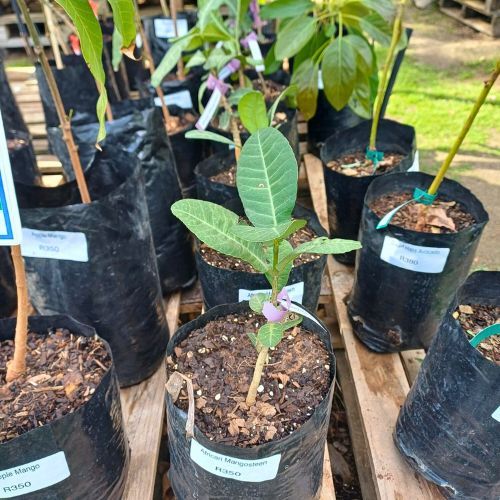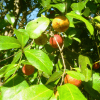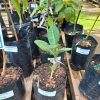Position – The mangosteen tree grows best in wet tropical conditions with temperatures between 20-30°C. Temperatures below 5°C will kill this tree. Due to it being tropical, it cannot withstand wind or frost. Plant this tree in 30-50% shade for the first 4 years after that, you can gradually move it to full sun.
Size – One of the distinct characteristics of the African Mangosteen is its leisurely growth rate. While this might not be optimal for those seeking rapid garden results, it is ideal for maintaining a manageable tree size in smaller garden spaces. This ensures that gardeners enjoy the tree without fretting about it overtaking their cherished garden.
Its distinct appearance and easily managed size provide an exciting challenge for those keen on experimenting with crafting these trees into unconventional Bonsai styles.
Soil type – African Mangosteen trees thrive best in deep, sandy soils. Soil can be a clay loam that holds moisture well. Ensure to add plenty of organic matter into the soil. Recommended soil pH is between 5 and 6. Add Lithuanian Peat Moss or at least one bag of acid compost.
The African Mangosteen naturally occurs in semi-fossilized beach dunes, showcasing their adaptability to such unique environments. While these trees can grow in other soil types, they may not reach their full potential in less ideal conditions.
Water – Water the tree regularly, especially during the dry season. In the absence of rainfall, the frequency can vary depending on soil type, climate, and local weather conditions; do not allow it to become waterlogged. Make sure the drainage is good.
Ensure that the water penetrates the root zone effectively. Water should reach a depth of at least 30-45 centimeters to encourage deep-root development. Shallow watering can lead to shallow root systems, making the tree more vulnerable to drought.
Mulch
Apply organic mulch to your tree all year round.
Use from 2 to 5 centimetres of pine bark mulch to protect the roots from UV damage and drying out. It retains moisture, and maintains an optimal pH. Do not let the mulch touch the plant stem, as it may cause infection or rot.
Fertilising
Fertilising young African Mangosteen plants is essential. Apply 1 teaspoon every 4-5 months of our all-plant fertiliser. The roots will absorb what they need.
Pruning – Prune only the dead branches and inside shoots when needed.
Harvesting – Pick the fruit by hand when it is soft.








